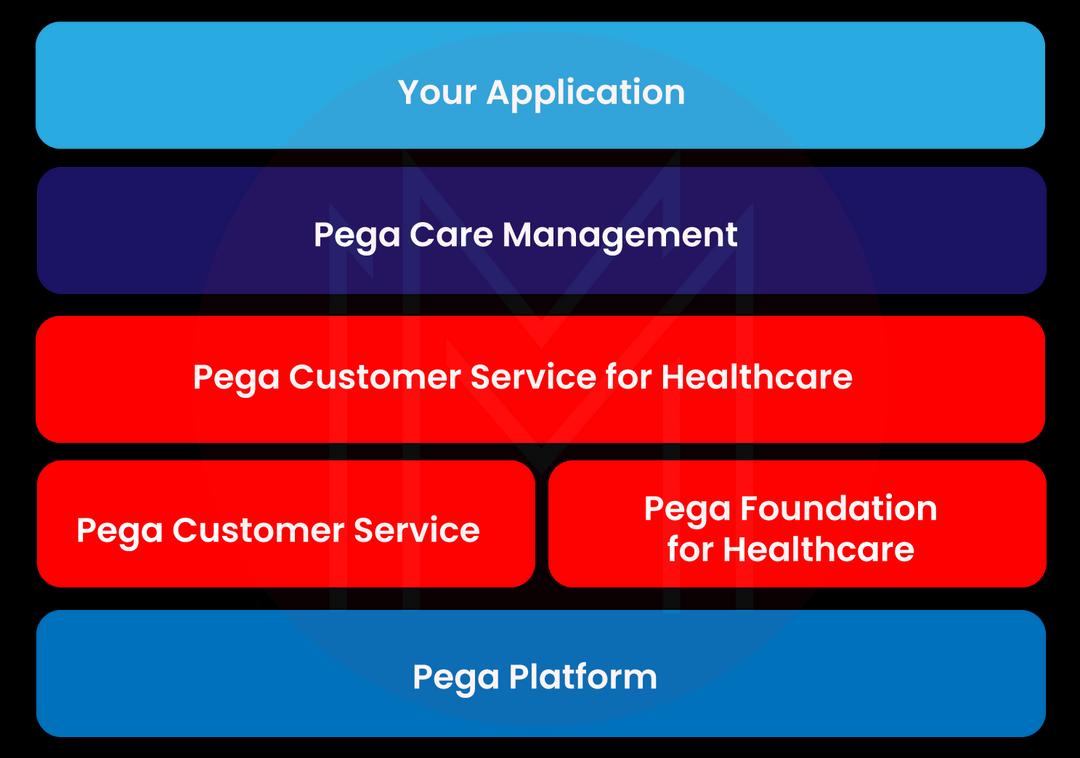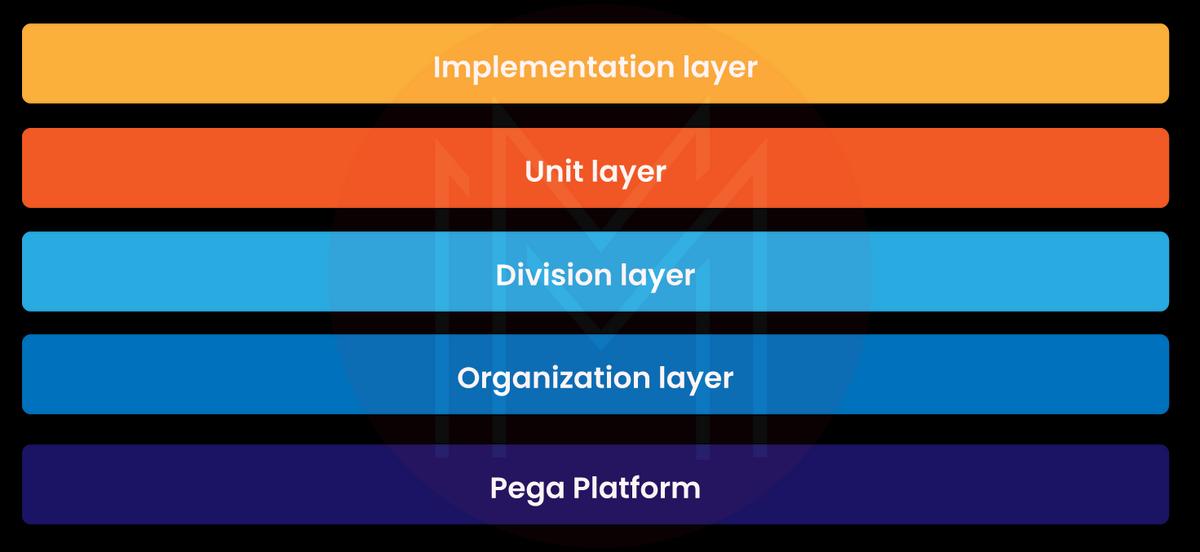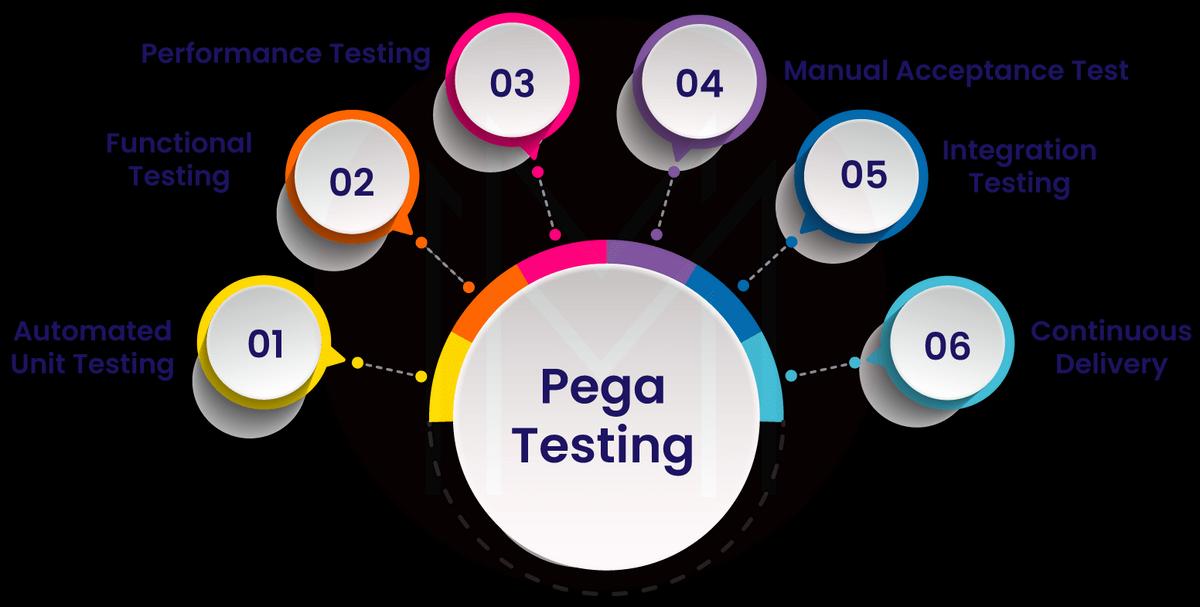Pega is the best software company for keeping clients happy and making sure operations run smoothly. The cloud and adaptive architecture of Pega make it easy for users to quickly deploy, expand, and change apps to meet the strategic needs of an enterprise. Pega builds framework applications to keep the reusable code, and implementation applications built on these frameworks will call the reusable codes for a specific implementation.
Top organisations like Accenture, Cognizant, TCS, and Deloitte use Pega Frameworks to deliver their projects rapidly. So, learning Pega Frameworks will help you get a prominent job and career advancement. This Pega Frameworks blog will enable you to master the Pega framework implementation.
| Pega Frameworks: Table Of Content |
What are Pega Frameworks?

Pega Frameworks are developed by Pega for preserving the reusable code and for implementing different applicat is a tool for Business Process Management. It is written in Java and employs OOP and Java concepts. And the big advantage is that we don't have to build the system from the ground up like in traditional programming. It is gaining popularity, though most traditional programmers would disagree.
| If you want to enrich your career and become a professional in Pega, then visit Mindmajix - a global online training platform: "Pega Online Training" This course will help you to achieve excellence in this domain. |
Why do we need Pega Framework Applications?
Pega's adaptive and cloud-based architecture enables users to quickly deploy and easily expand and modify apps to meet the enterprise's strategic needs. Pegasystems provides the core product and creates an application framework to meet specific business requirements.

Related Article:Pega Interview Questions
What are Class Layers In Pega Frameworks?
Framework Classes
Framework classes define a common work-processing foundation that you extend and modify to create implementation applications for an organization, division, or organizational unit. The pega framework layer contains framework classes.
For example, an auto loan company may have an auto loan framework application that contains all of the assets required for the basic auto loan process. The enterprise then creates two implementation applications based on the auto loan framework to meet the unique needs of its two divisions: commercial business and personal.

Implementation Classes
Implementation classes define how assets in a framework layer are extended, reused, and specialized to meet the business needs of an organisation, division, or organisational unit. For example, you can build two division-level implementations on an organisation's auto loan framework layer - business auto loan and personal auto loan.
The implementation layer includes implementation classes. cases related to application processes are typically instances of case-type classes that belong solely to the implementation layer.
Organisation Class
Organisation classes include enterprise-wide data assets and assets that your application can reuse for business logic. Classes and Rules for data stored in the system, as well as classes and rules for accessing data in external systems via connectors, are examples of data assets. Standard properties, decision tables, and service-level agreements are business logic assets.
For example, the auto loans company may want to reuse the property for employee serial numbers on an enterprise-wide basis. By reusing this property, the various applications used by employees across the enterprise can rely on the same serial number property to represent the same employee consistently.
Types of Pega Framework Applications
Application or Custom Framework
Framework applications are useful for preserving reusable code during implementation, whereas enterprise applications are used to keep reusable codes within an organisation.
Making a Pega application framework
Make an application framework with rules that apply to all parts of the business. The application, which is built on the framework application, will use the same rules as the implementation application.
Follow the steps below to create a new operator for the application wizard.
- Use the credentials adminstrator@pega.com to access the Dev studio.
- Please create a new operator with a name denoting their role as an administrator for the Pega application and send them to administrator@pega.com.
- To the new operator record, please include the PegaCS: AppSetup access group. Choose it as the default access group by clicking the radio button to the left of the access group.
- In the event that the access group is designated as the operator's default access group, the new application wizard will launch upon operator login.
- Immediately put that new operator in a safe place.
- Building a functional programme on top of an existing framework.
- Launch the framework app as the new framework app's operator and log in.
- To create a new application in Dev Studio, choose it by clicking its name in the menu bar.
- On that What kind of application do you want to build? tab, choose your framework application.
- Your new implementation app will be created on top of the existing framework app and will utilise the same set of rules that govern the existing app.
Creating an implementation application on top of a framework application
Follow the rest of the New Application wizard's steps until you get to the "Name your application" page, then move on to the next steps.
- See Creating applications for more information on each step of the wizard.
- After you have finished the steps in the wizard, the Application Wizard will create one system administrator operator for you.
- Enter the application's Name on the Name your application page, then click Advanced configuration.
- Enter the Organization name, Division name, and Unit name for this application in the Organization settings section.
- If you haven't defined the organization's entities (for example, the division), enter the new entity's Name in the appropriate field. When you create a new application, the application saves the new values.
- Save the file.
- Click the Create application button.
- Click Go to the app to launch the implementation application.
Solution Frameworks
Pega provides this kind of application that may be utilised straight in any deployment.
Pegasystems' industry-specific solution frameworks give businesses in the insurance, healthcare, banking, and investment sectors a head start on creating apps that support crucial workflows. These programmes are narrow in focus, with the goal of making programming and customisation easier. They will showcase the possible benefits of Process Commander to the organisation and install features that are commonplace in the industry.
Among the many customers of PegaSystems Inc. who employ solution frameworks are:
- Intelligent Payments Research - to facilitate wholesale banking operations.
- Fraud and Anti-Money- Money Laundering and Fraud Investigation Management.
- PeraHealth Sales Process Manager- Helping individuals who foot the bill for medical treatment is what the PeraHealth Sales Process Manager is all about.
- Insurance Industry Framework- A comprehensive startup kit.
- PegaCARD CPM - to help with card operations' inbound customer care activities
- PegaCARD Smart Dispute- Help with credit card disputes using PegaCARD Smart Dispute.
Pega CPM Framework
Pega Customer Process Manager (CPM) is a product in Pega's CRM solution suite. This framework primarily intends to assist Customer Service Representatives (CSRs) in processing customer service inquiries and requests from the time they are initiated until they are resolved. In effect, it enables CSRs to view complete customer information in a single view, accept customer inquiries, and initiate a workflow process to resolve them. These customer inquiries are referred to as' service intents' in pega jargon.
Pega Banking Framework
With Pega BPM, you can quickly and easily automate banking business processes and tasks, reducing costs and errors while eliminating manual handling. Customer relationship management — Pega KYC framework enables you to provide excellent customer service while increasing per-customer profitability.
Pega HealthCare Management Framework
The Pega HealthCare Management Application transforms how you manage costs, coordinate services, and improve outcomes while providing person-centred care. It manages care administration so you can focus on care delivery, connecting care teams, and personalized programs for better financial, operational, and healthy outcomes with a unified platform.
The application simplifies connecting with and engaging your members by orchestrating care programs across back-end systems and every channel, including web self-service, healthcare devices, mobile apps, and phone calls. To provide the best value care, actionable analytics reminds members to choose healthy behaviours and coordinate activities across the care team.

Pega KYC Framework
Pega KYC facilitates routine reviews, maintenance, onboarding, and offboarding processes for financial institutions, allowing them to better assess the risks associated with conducting business with individual consumers. By combining a thorough set of questions spanning Product, AML, and Tax rules, it serves the needs of internal compliance teams and external authorities. Customer management for different types of businesses and individuals, as well as different subsets of the banking industry like investment banking, corporate banking, and retail banking, are all catered to by this software.
Pega Framework FAQs
1.Is it Pega CRM or BPM?
Pega CRM is a Pegasystems enterprise-level customer relationship management (CRM) solution that combines sales, marketing, and customer service capabilities into a single solution. It also provides end-to-end automation and real-time artificial intelligence capabilities to drive customer engagement insights.
2.What are the Pega tools?
PEGA is a popular Business Process Management (BPM) tool built on Java concepts that enable users to implement changes faster than Java-based applications. PEGA is primarily used to reduce costs and improve business reasons. PEGA is written in Java and employs OOP and Java concepts.
3.What is the implementation and framework of Pega?
The framework layer may consist of one or more generalised applications, such as a standard Pega application for a specific industry or a custom application that can be extended. The Implementation layer defines an application tailored to a particular division or line of business.
4. What type of platform is Pega?
Pega is a powerful low-code platform that helps the world's leading organisations become more agile to adapt to change. Our AI-powered decisioning and workflow automation help clients solve their most pressing business challenges, such as personalising engagement, automating service, and streamlining operations.
5. Is Pega front end or back end?
Pega is a front-end technology. A Pega front-end developer must be an expert in web technologies like HTML, CSS, and Javascript. A front-end developer utilizes HTML and CSS as the building blocks of the web page to define the languages that render the UI.
6. Is Pega the same as Salesforce?
Salesforce was among the first companies to offer SaaS (Software-as-a-Service) products and is dedicated to a cloud-based strategy. The Pega Cloud is a single-tenant cloud environment maintained by Pegasystems, where Pegasystems CRM is designed to be implemented on-premises.
7. Who are Pega's competitors?
Pega's competitors are IBM, Oracle, Appian, Software AG, Newgen, AURA, AgilePoint, and Agiloft.
8.Is Pega A Paas or SaaS?
Pega Cloud is a Software-as-a-Service (SaaS) offering from Pegasystems.
Conclusion
Pega is a powerful low-code platform that helps the world's leading organizations become more agile to adapt to change. Our AI-powered decisions and workflow automation help clients solve their business challenges, like personalizing engagement, automating service, and streamlining operations.
Pega Frameworks are built for code reuse and accelerating the application delivery process. Pega Frameworks will give the reusable code during the application implementation. I hope this Pega Framework article is helpful to you in learning the importance of Pega Frameworks and different kinds of Pega Framework Applications. If you have any queries, let us know by commenting in the below section.
If you want to enrich your career and become a professional in Pega, then visit Mindmajix - a global online training platform: "Pega Online Training" This course will help you to achieve excellence in this domain.
 On-Job Support Service
On-Job Support Service
Online Work Support for your on-job roles.

Our work-support plans provide precise options as per your project tasks. Whether you are a newbie or an experienced professional seeking assistance in completing project tasks, we are here with the following plans to meet your custom needs:
- Pay Per Hour
- Pay Per Week
- Monthly
| Name | Dates | |
|---|---|---|
| Pega Training | Jan 10 to Jan 25 | View Details |
| Pega Training | Jan 13 to Jan 28 | View Details |
| Pega Training | Jan 17 to Feb 01 | View Details |
| Pega Training | Jan 20 to Feb 04 | View Details |

Madhuri is a Senior Content Creator at MindMajix. She has written about a range of different topics on various technologies, which include, Splunk, Tensorflow, Selenium, and CEH. She spends most of her time researching on technology, and startups. Connect with her via LinkedIn and Twitter .













